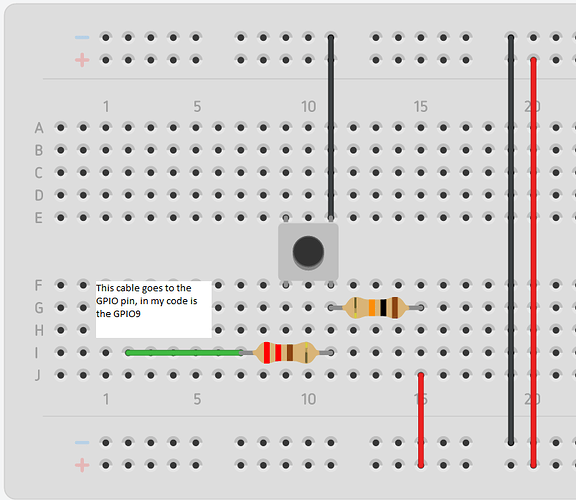Hello Blynk Community!
I was reading about Virtual Pins and how it works, I could understand the concept, but I could not find some example to use to make Blynk App to read when a simple button is pressed or not in the Raspberry Pi (RPi).
There’s a lot of information from Arduino but from Raspberry Pi I could not find it, I saw that another partners from the Community made this question but without a solid answer to clear the issue that I want to clear.
I hope to get an answer 
Best regards
Really helpfull your topic Gunner
Here is the code that you used but without the local server that you made, just a copy-paste  :
:
var Gpio = require('onoff').Gpio; // links variable 'Gpio' to the all important onoff GPIO control library
var Blynk = require('blynk-library'); // Links variable 'Blynk' to the Blynk Library
var AUTH = 'xxxxxxx'; // My top secret auth code... useless to anyone on the cloud ;P
var blynk = new Blynk.Blynk(AUTH);
var v1 = new blynk.VirtualPin(1); // Setup Button Widget on V1 with variable 'v1'
var v9 = new blynk.VirtualPin(9); // Setup Display Widget on V9 with variable 'v9'
var v10 = new blynk.VirtualPin(10); // Setup LED Widget on V10 with variable 'v10'
v1.on('write', function(param) { // Watches for V1 Button
console.log('V1:', param[0]); // prints value to CLI
if (param == 0) {
blynk.virtualWrite(10, 0); // V10 Widget LED on
} else if (param == 1) {
blynk.virtualWrite(10, 1023); // V10 Widget LED off
}
});
v9.on('read', function() { // I don't understand why this says read??
v9.write(new Date().getSeconds()); // but this sends the seconds 0-60 to the Display Widget
});
led = new Gpio(10, 'out'), // Sets up the BCM pin 10 as an output for the LED and assigns it variable 'led'
button = new Gpio(9, 'in', 'both'); // Sets up the BCM pin 9 as an input registering both rising and falling for the variable 'button'
button.watch(function (err, value) { // Watches for button press and assigns 0/1 to value
if (err) {
throw err;
}
led.writeSync(value); // Sends value (0/1) to Physical LED
if (value == 0) {
blynk.virtualWrite(2, 0); // V2 Widget LED on
} else if (value == 1) {
blynk.virtualWrite(2, 1023); // V2 Widget LED off
}
});
process.on('SIGINT', function () { // This is apparently a cleaner exit upon CTRL-C... I dunno??...
led.unexport();
button.unexport();
});
and this is the simple schematic to connect to the breadboard:


 :
: